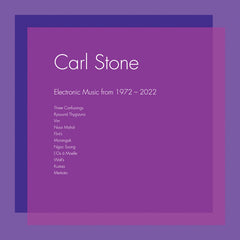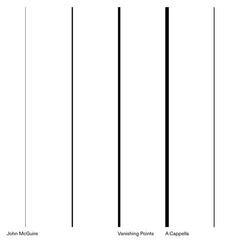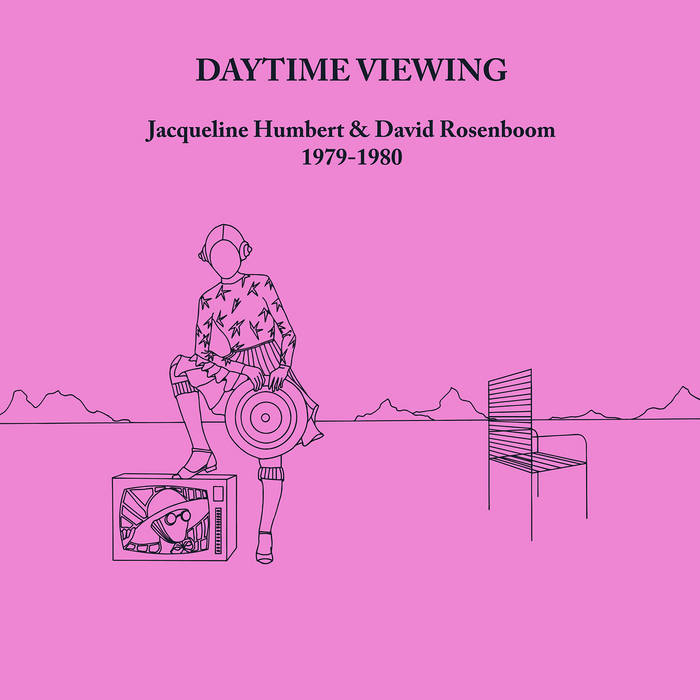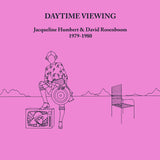Jacqueline Humbert & David Rosenboom // Daytime Viewing 2xLP
- Item no:
- Availability:
アメリカの歌手Jacqueline Humbertと実験音楽家David Rosenboomが、2023年3月に同国NYのUnseen Worldsからリリースした再発2枚組レコードです。(オリジナルは1983年にカセットでリリース)
キャッチーなエレクトロニック・ポップ9曲を収録。16ページのブックレットとDLコード付属。
レーベルその他作品はこちら /// Click here to see more Unseen Worlds releases available at Tobira.
----------------------------
Includes 16-page booklet with lyrics and additional artwork. Includes DL code.
++
This project was originally recorded in 1982 in analog form at the Center for Contemporary Music Recording Studio at Mills College, Oakland, CA and released as a private cassette in 1983. First re-released in 2013 by Unseen Worlds (UW10), it was re-mastered again in 2021 by Stephan Mathieu.
The recording was based on the original performance-art version of Daytime Viewing, which included music, text, theater, projections, fashion/costume designs, and video, created in 1979-80 and performed at the Music Gallery, Toronto; 80 Langton St., San Francisco; Kunsthalle, Basel; Festival International de Musique Électronique, Video et Computer Art, Brussels; and Macy's San Francisco as part of the J. Jasmine Review on the New Music America Festival 1981.
++
Unseen Worlds:
" 40th Anniversary Edition - newly remastered from the master tapes, with an additional bonus LP of instrumentals and the previously unreleased “Narration Theme.”
Daytime Viewing (1979-80) is an extended narrative song, based on a casual analysis of daytime television drama and the audience phenomena such programming addresses. The piece explores the use of fantasy as a survival mechanism against loneliness, illustrating the human compulsion to inflate the mundane to mythological proportions. A central female character weaves tales, using threads of personal experience and the idea of TV as friend, as mantra, and as transformational window between imagined spectacle and the pedestrian plane.
Originally released as a private cassette edition [recorded, 1982; Chez Hum-Boom release, 1983] documenting the collaborative performance piece of the same name by Jacqueline Humbert & David Rosenboom. This heady, thoroughly enjoyable work was first made available on CD and LP in 2013 by Unseen Worlds. Jacqueline Humbert (aka J. Jasmine) is a songwriter of brains and wit on par with Robert Ashley, with whom she's worked extensively. David Rosenboom's complex, harmonic electronic arrangements are accentuated brilliantly by percussion from William Winant. Daytime Viewing can happily be added to a small but significant group of work that, through lesser-known paths, engaged in an equally revelatory reexamination of the Great American Songbook as Minimalism did with 20th Century composition. "
Artist : Jacqueline Humbert & David Rosenboom
Label : Unseen Worlds
アメリカの歌手Jacqueline Humbertと実験音楽家David Rosenboomが、2023年3月に同国NYのUnseen Worldsからリリースした再発2枚組レコードです。(オリジナルは1983年にカセットでリリース)
キャッチーなエレクトロニック・ポップ9曲を収録。16ページのブックレットとDLコード付属。
レーベルその他作品はこちら /// Click here to see more Unseen Worlds releases available at Tobira.
----------------------------
Includes 16-page booklet with lyrics and additional artwork. Includes DL code.
++
This project was originally recorded in 1982 in analog form at the Center for Contemporary Music Recording Studio at Mills College, Oakland, CA and released as a private cassette in 1983. First re-released in 2013 by Unseen Worlds (UW10), it was re-mastered again in 2021 by Stephan Mathieu.
The recording was based on the original performance-art version of Daytime Viewing, which included music, text, theater, projections, fashion/costume designs, and video, created in 1979-80 and performed at the Music Gallery, Toronto; 80 Langton St., San Francisco; Kunsthalle, Basel; Festival International de Musique Électronique, Video et Computer Art, Brussels; and Macy's San Francisco as part of the J. Jasmine Review on the New Music America Festival 1981.
++
Unseen Worlds:
" 40th Anniversary Edition - newly remastered from the master tapes, with an additional bonus LP of instrumentals and the previously unreleased “Narration Theme.”
Daytime Viewing (1979-80) is an extended narrative song, based on a casual analysis of daytime television drama and the audience phenomena such programming addresses. The piece explores the use of fantasy as a survival mechanism against loneliness, illustrating the human compulsion to inflate the mundane to mythological proportions. A central female character weaves tales, using threads of personal experience and the idea of TV as friend, as mantra, and as transformational window between imagined spectacle and the pedestrian plane.
Originally released as a private cassette edition [recorded, 1982; Chez Hum-Boom release, 1983] documenting the collaborative performance piece of the same name by Jacqueline Humbert & David Rosenboom. This heady, thoroughly enjoyable work was first made available on CD and LP in 2013 by Unseen Worlds. Jacqueline Humbert (aka J. Jasmine) is a songwriter of brains and wit on par with Robert Ashley, with whom she's worked extensively. David Rosenboom's complex, harmonic electronic arrangements are accentuated brilliantly by percussion from William Winant. Daytime Viewing can happily be added to a small but significant group of work that, through lesser-known paths, engaged in an equally revelatory reexamination of the Great American Songbook as Minimalism did with 20th Century composition. "
Artist : Jacqueline Humbert & David Rosenboom
Label : Unseen Worlds
Related Products

You may also like:

You may also like:

You may also like:




